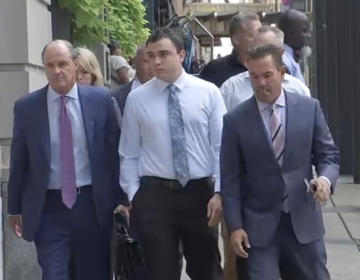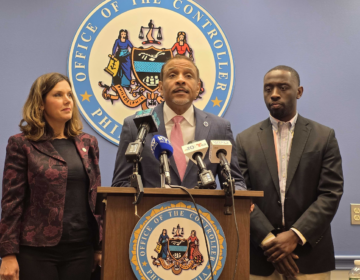Chestnut Street lane configuration is legacy of failed transitway
Listen-

-

-
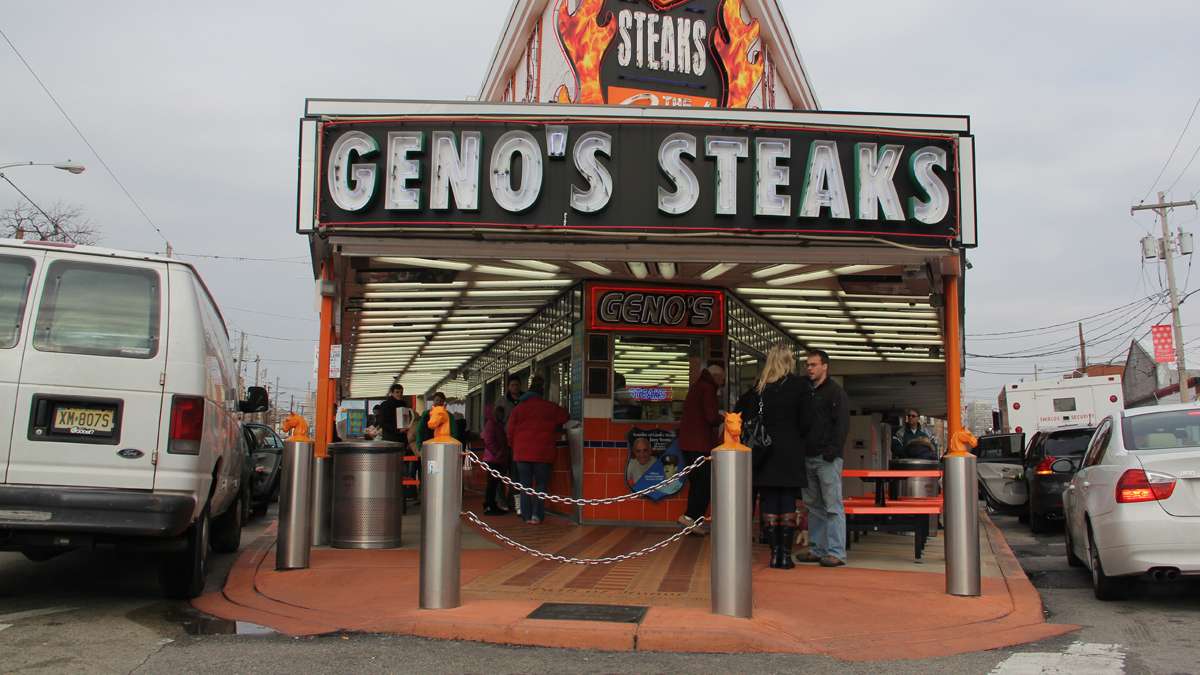
-
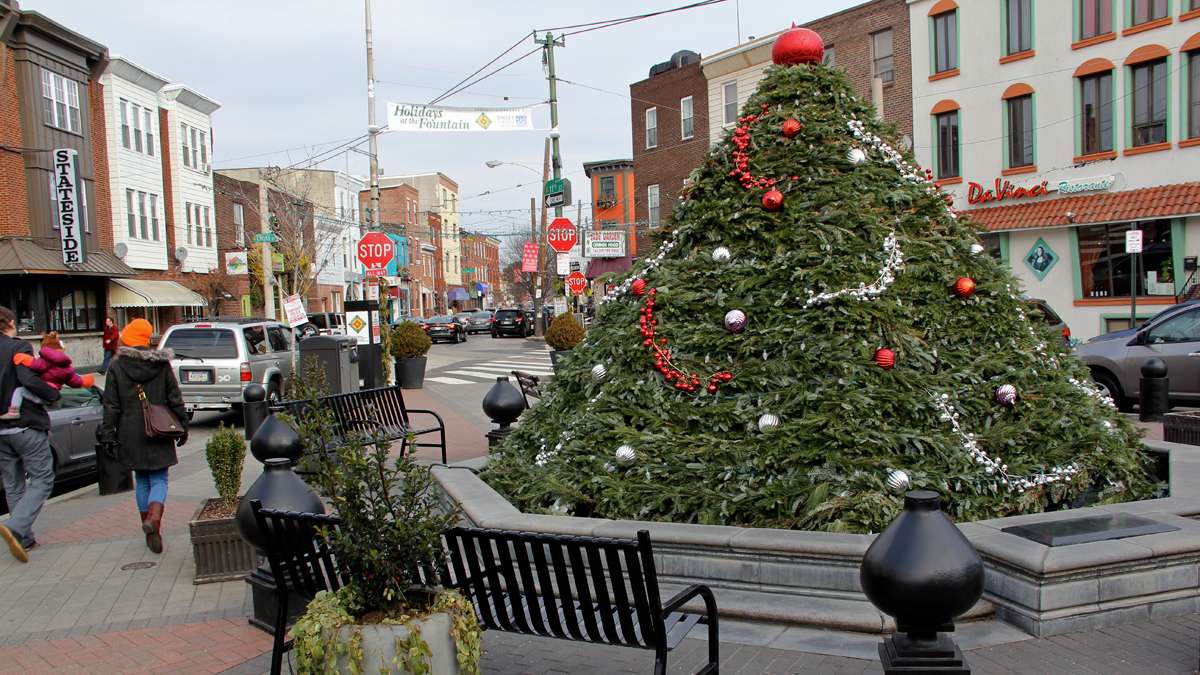
East Passyunk Avenue's 'Singing Fountain' is dressed up for Christmas — as a Christmas tree. (Emma Lee/for NewsWorks)
-
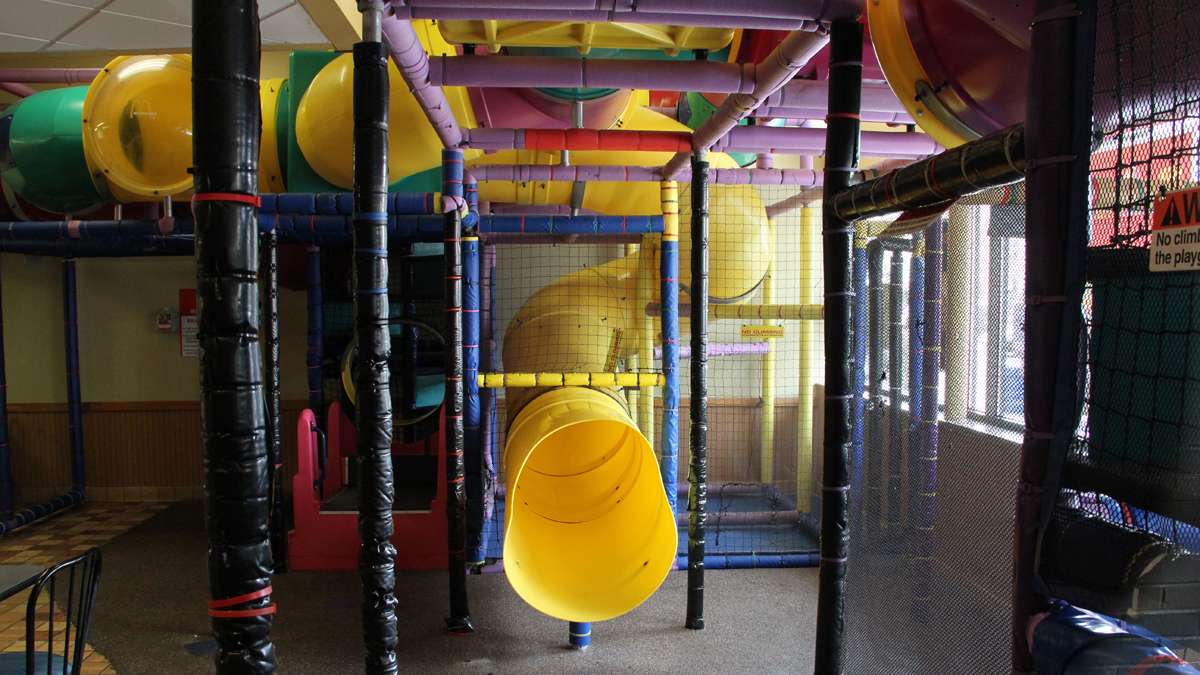
-
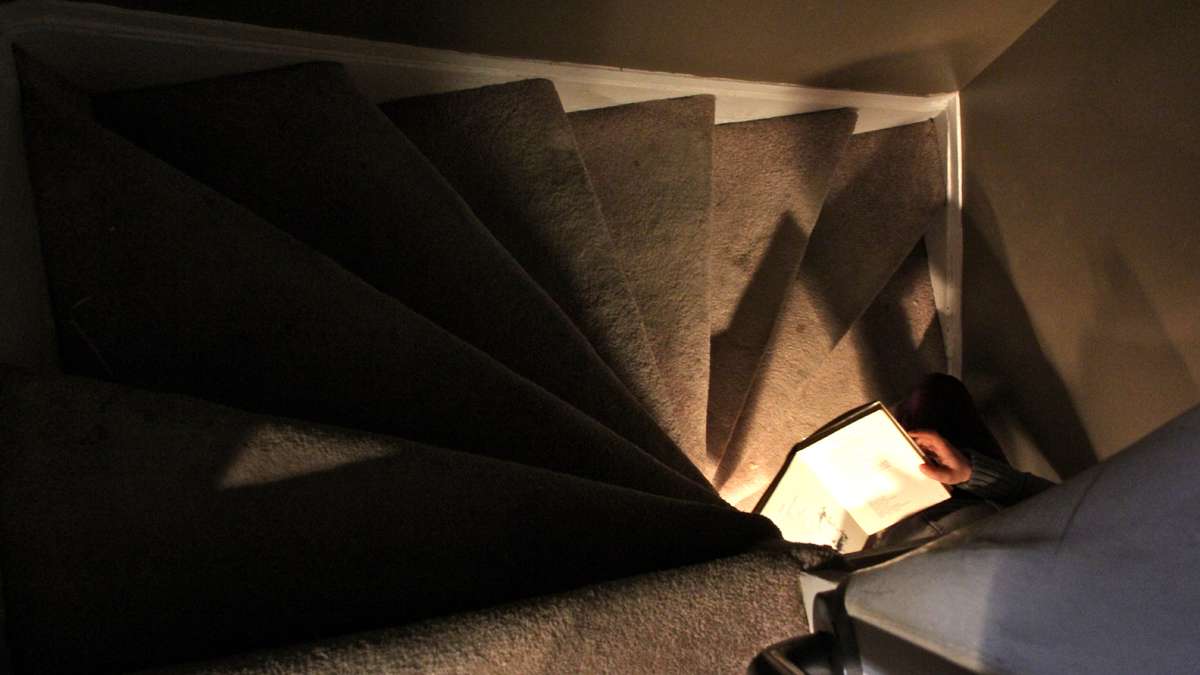
-

-

-

-

-
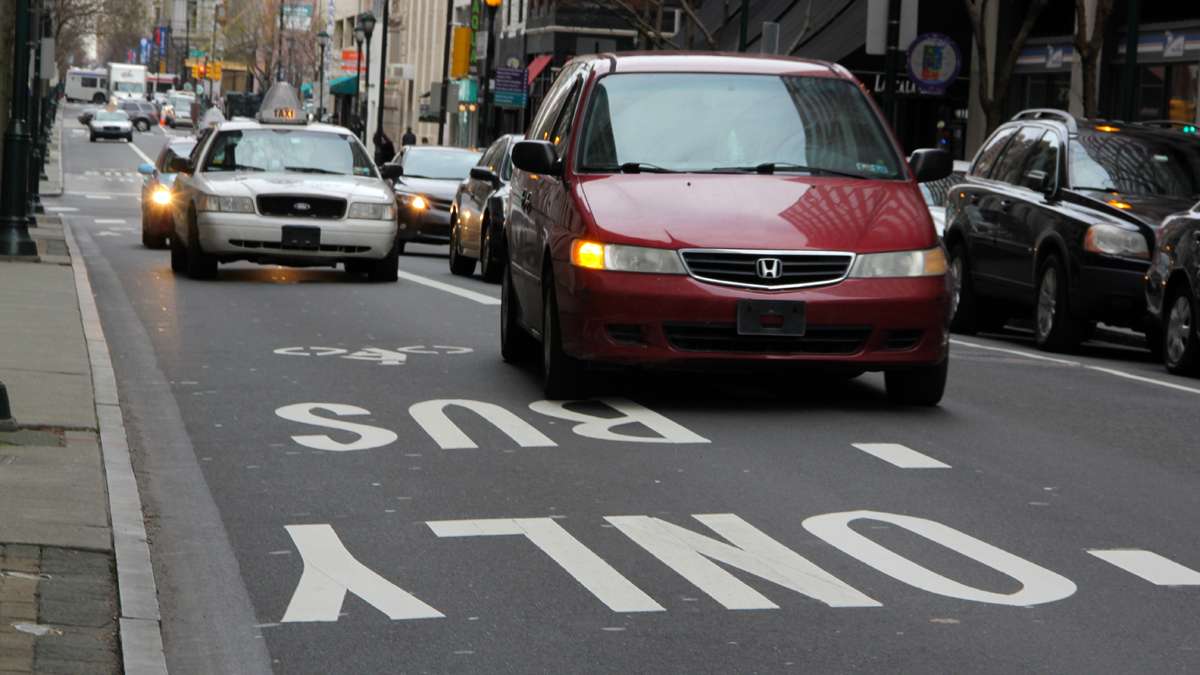
The bus and bike only lane on Chestnut Street is widely ignored. (Emma Lee/for NewsWorks)
Most cars are prohibited from using half of a major Center City thoroughfare, while bikes and buses are supposed to share a lane. This unusual setup is the product of a controversial urban planning project that once banned all non-emergency cars on key parts of Chestnut Street during the day.
These days, the scene at 10th and Chestnut is pretty orderly. There’s a lane full of parked cars and another devoted to moving traffic. Pictures on the road and signs next to it let everyone know that the right lane is reserved for buses, bikes and vehicles turning right.
A bus pulls up and passengers file off.
It might look like just an average city street, but there’s an interesting story about how this stretch of modern-day Chestnut Street came to be.
The area was once home to the Chestnut Street Transitway. The 12-block outdoor mall was an ambitious urban planning attempt to reinvigorate the street.
It had a famous designer, according to Harris Steinberg, executive director of Penn Praxis, the clinical consulting arm of the School of Design at Penn.
“Ed Bacon first came up with the idea,” said Steinberg, referring to the renowned urban planner and architect who remade much of Philadelphia. Bacon “envisioned for the Bicentennial a transit way both on Walnut Street and Chestnut Street that went river to river with these open-air trolleys. Obviously, that never came to be.”
The proposal to prohibit cars on Chestnut Street included electric cars that would move people from the Delaware River to the Schuylkill.
Bacon’s “pedestrian spine” became a reality, sort of, when Philadelphia used federal funding, as well as some city and state money, to establish the Chestnut Street Transitway.
Enter the buses
But there was a catch — the money was intended to enhance mass transit. According to Steinberg, that meant there would be an effort to make the area more pedestrian-friendly as well as allowing buses — big, noisy buses barreling down Chestnut Street. Businesses closed and politicians, urban planners and others deemed the transitway a flop.
Former Philadelphia City Councilman Frank DiCicco, who served as chairman of the Streets and Services Committee, said the scene on Chestnut Street was intimidating.
“All you saw were huge buses rolling down the street,” he said.
While it was designed to serve as a people-friendly transitway, “it seemed to me overwhelmed with buses and pedestrians were not in a safe environment,” DiCicco said.
In addition to the danger posed to walkers, DiCicco said traffic problems and additional pollution on nearby streets resulted as cars tried to get through without using Chestnut Street.
After cars were allowed on the street, the city established the right lane as territory for buses, bikes, and vehicles making right turns.
“The vestige of this old bus lane and its relationship to the original funding is kind of an interesting shard of glass you found while looking at the urban landscape. It points back to some really kind of failed attempts to bring life back to a city when we were struggling to figure out how to reinvigorate the urban core, Penn Praxis’ Harris Steinberg said.
A headache for bicyclists
The Bicycle Coalition of Greater Philadelphia’s Sarah Clark Stuart said the lanes need to be reconfigured. “It’s a confusing facility because of the lack of enforcement,” she said. “Cars are frequently in the bus/bike lane, there are many buses using that lane, so there is a great deal of bus traffic that bicyclists are sharing the lane.”
When the city recently repaved Chestnut Street, the Bicycle Coalition suggested a change.
“We recommended that sharrows be placed on both lanes. These are markings on the street of a bicycle and two chevron arrows,” Stuart said. “And we recommend that the bus/bike only lane be dropped because it doesn’t meet standards for bicycle lanes.”
Without changes, cyclists are better off sticking to other streets, she said.
Andrew Stober, chief of staff in the Mayor’s Office of Transportation and Utilities, acknowledged that cars that aren’t turning right do sometimes end up in the right lane — either out of confusion or intentionally. While the current setup isn’t ideal for bikes, he said, the city thinks “it’s better than a totally shared use lane that would slow buses down and create more traffic for cyclists.”
During the recent paving project, “it was a conscious decision on the city’s part to continue to have Chestnut Street through Center City be a bus and bike lane just as we have on Market Street as well,” Stober said. “And we put in some slightly wider pavement markings this time around to hopefully make clear to cars where and where they can’t be.”
Question of federal funding
Steinberg said there may be another reason for reserving the right lane primarily for buses and bikes. The original Chestnut Street Transitway was built using federal funding designed to enhance mass transit. The city could have to return that money if it eliminated the current restrictions and opened the whole street up to cars, he said.
Stober disputed that. While it may have had to return the funds in the past for opening up all the lanes on Chestnut Street, the city believes that is no longer the case. The current arrangement on Chestnut Street was maintained because it’s a good one, Stober said.
“In a perfect world, if it was Disney, I guess we could find a better way …,” said DiCicco. “But it’s not Disney World. And we’re a city, and a city has vehicles on it and if we can share the road with buses and bikes and cars, I think that’s the best way to do it.”
WHYY is your source for fact-based, in-depth journalism and information. As a nonprofit organization, we rely on financial support from readers like you. Please give today.


